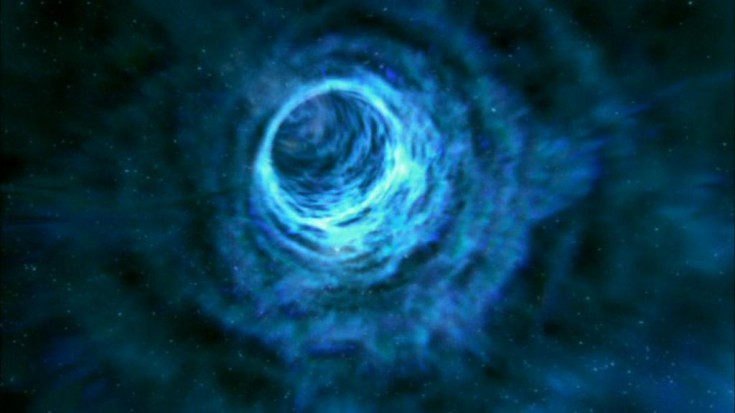Vampires and Snakes and Worms? Oh My! (Part One)

How many of you have ever wanted to just step into another world? To escape your troubles on this planet, to enter an alternate reality? Today we'll be doing just that. My name is Silmarien Szilágyi, and I'll be your tour guide. Follow me to Colorado, to Cheyenne Mountain, where hidden 28 levels beneath the surface is a curious device called the stargate. Please keep all body parts inside the gate at all times.
For my final Science Friction articles, I'll begin with Stargate SG-1, as it was the first, then finish with Stargate Atlantis (SGA) in the next Alte issue. If you're wondering why I've skipped Stargate Universe, well, as Maya Winters so eloquently stated, "SGU does not exist to me."
For those unfamiliar with the shows (shame on you!), teams of soldiers and scientists travel through the stargate to other worlds. In the case of SG-1, the home base is Earth (Cheyenne Mountain), while in SGA, it is the lost city of Atlantis, located in the Pegasus Galaxy. The teams get into all sorts of trouble and meet some rather peculiar aliens, some of which will be discussed in this article, as their "science" begs further investigation.
I briefly mentioned wormholes in my previous article ("Science Friction: What the Hezmana is That?!"), as they are used as a means of travel, albeit accidentally. But as both SG-1 and SGA (and that third, non-existent Stargate) revolve around wormholes, they warrant some explanation. Wormholes are stable black holes, connecting two stargates in the spacetime across and between galaxies. To put it simply, wormholes are "tunnels" that allow matter to travel near-instantaneously and faster-than-light from one stargate to another. Imagine folding space in half and connecting the two halves with a tunnel--that is essentially how wormholes are thought to work. Of course, as far as we know, wormholes are still science-fiction, and some astrophysicists don't even believe they're viable "space highways."

For a wormhole to work, a black hole must be created artificially, which requires an obscene amount of energy. Consider that a black hole forms when a massive star dies. The resulting burst of energy is so powerful that it deforms the spacetime around it, causing a black hole that sucks in all matter, including light. Therefore, to manufacture something so limitless requires an unlimited power source, such as the energy of multiple suns--and even that is conservative. But say you manage to create a wormhole. Now it must be controlled to remain stable. An unstable wormhole can collapse, and then it's bye-bye human, either because of death or deposition in a random corner of space. Keeping a black hole happy is a formidable, even impossible, task--more frightening than creating one. It requires something called negative energy density. Yes, you read that correctly--negative energy is what would enable faster-than-light travel because it would keep a black hole stable. How? Well, because exotic matter is aptly named--its behavior is opposite to that of normal matter, which obeys the laws of physics. Exotic matter is a bit of a rebel, and it is precisely its contrary nature that could stabilize a black hole. Simply put, negative energy, which forms exotic matter, is unaffected by gravity. Thus, it would repel the gravity that tried to collapse a black hole, keeping it open and stable.
So you managed to create and sustain a wormhole. Now you just have to step into it, right? Yes and no. When you enter a wormhole, your atoms are dematerialized for the superluminal (faster-than-light) journey, then reassembled as you exit on the other side. This is rather frightening, as your atoms are what make you you. Mr. Woolsey elucidated our concerns best, as he asked, "And the chances of my being reassembled incorrectly?" in the SG-1 episode "The Scourge." It's risky business stepping into the wormhole, but Samantha Carter reassures Woolsey that the likelihood of incorrect atom reassembly is slim. In reality, however, it's probable that the trip through a wormhole is one-way; once you step in, you don't return, as it's the black hole's nature to swallow all matter.
Now, if you'll just step to the side, once the wormhole is established, we'll travel to a planet called Chulak. Don't worry, I've been through the stargate many times, and I'm none the worse for it! Brace yourself, though, it's a bit of a strange sensation the first time.
Welcome to Chulak! You've emerged in one piece, I see. Let's meet our first alien, in the form of an aquatic, egomaniacal, brain-burrowing snake. The Goa'uld are sentient, snake-like parasites, so they require a host to survive. They enter their victim through the back of the neck, before intertwining themselves with their host's brainstem. From this prime location, the Goa'uld dominate and control their host. Unpleasant little buggers, eh? And that's not the worst of it. Because of their egomaniacal nature, they force humanoid beings to worship them as gods--e.g., the Egyptian pantheon--and some Goa'uld wholeheartedly believe they're actual deities. Now perhaps you're as amazed as I was that such a small-brained, ultimately frail creature could be so manipulative. Manipulation requires intelligence...or does it? Doctors at Stargate Command have determined that the Goa'uld secrete a toxin that hurts and even kills their host. Therefore, it's entirely possible they also secrete a substance that can manipulate the host.
However, that still doesn't explain the Goa'uld's hyperbolized self-beliefs. I know they're alien, but in anatomy and physiology, they most closely resemble Earth-snakes, which obviously don't force humans to worship them. Additionally, the Goa'uld rarely invent their own technology; they steal it from the other advanced races and may decorate it with Egyptian-like motifs, but it's their subjects (i.e. slaves) that do the actual engineering and building. What the Goa'uld lack in charm and modesty, they make up for in an ambition that's unique to their species. Survive at all costs, so don't expect the Goa'uld to work their serpentine wiles on you. In fact, if you see a snake slithering towards you with an evil gleam in its red eye, stomp on it. Better yet, grab your sidearm and shoot it. Then burn it for good measure.

Congratulations on surviving your first foray through the stargate! Overwhelmed? Don't worry, it happens to everyone. Sit down, have a drink, and don't mind the doctors; they're just making sure you didn't bring home any...souvenirs. I'd like you to meet my friend, Orlin. He belongs to a race of advanced humanoid beings we call the Ancients. The Ancients invented the stargates and are partly responsible for populating the Milky Way and Pegasus Galaxies with humans. Did we learn English from them? No, why do you ask? Oh, yes, Orlin does speak English, as does the rest of the universe, it seems, but English originated in Celtic Europe. However, somehow all aliens speak it, even when their writing is decidedly not English. The Jaffa, for example, speak both English and a language similar to Egyptian, but they write in hieroglyphs. The humans brought from Earth by the Ancients speak English, but the Ancients' language is Latinesque. In fact, Orlin had to learn English when he came to Earth. So how is it that everyone else speaks it? Good question. In Farscape, translator microbes translate everything into a common tongue, but that explanation doesn't appear to work for Stargate; otherwise, we wouldn't hear any alien languages spoken. In actuality, many humanoid and non-humanoid people have their own unique language. That wouldn't be the case if translator microbes were involved. Perhaps the Goa'uld that inhabit their hosts automatically translate their language, which is similar to Egyptian, into English. But that would only work for the Goa'uld. How do the other languages become English? Whatever the explanation, English truly is the universal language.
Well, this is where our tour of Stargate Command comes to an end. Pack your bags, because tomorrow we'll be boarding the Daedalus, which will take us to the Pegasus Galaxy to visit Atlantis. The trip takes about three weeks, so be sure to bring plenty of reading material! Oh, and if you see a short, naked pink alien, that's Hermiod. Don't mention his lack of pants, and try not to take his insults on your intelligence to heart. He's really quite a dear.
Sources:
1. Wright, B. and J. Glassner (1997-2007). Stargate SG-1.
2. http://apod.nasa.gov/htmltest/gifcity/bh_pub_faq.html
3. Eric Ford, Astrophysicist at UF
4. My mind






